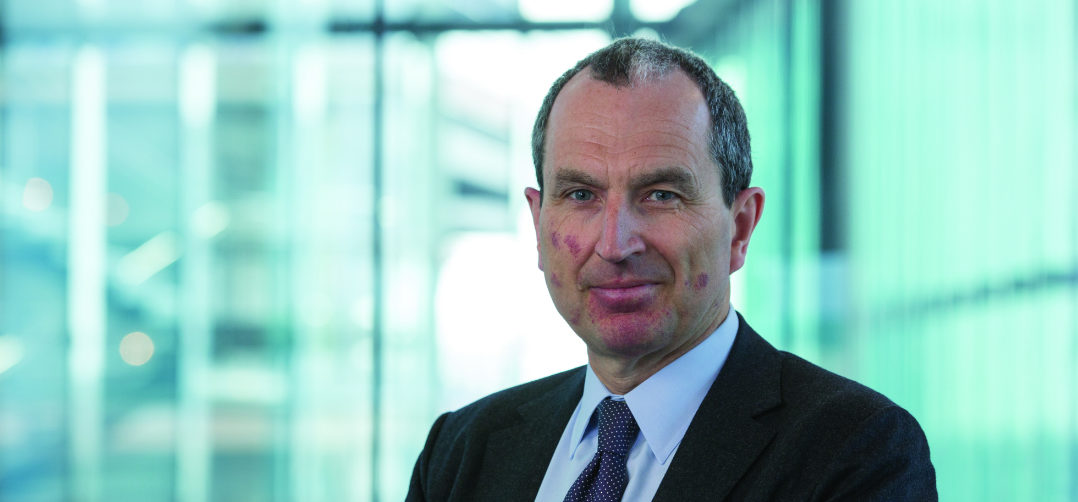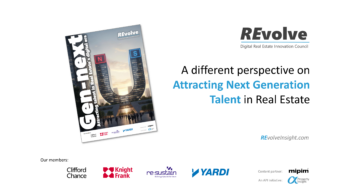Real estate technology: opportunity or threat?
Over the years, British Land has developed some of London’s most iconic buildings; they have usually stood the test of time. Yet it’s taken exactly that – time – to plan, design and develop them. A somewhat strange comparison perhaps, but nuclear submarines tell a similar story: incredibly complex, high technology machines which are something like a decade in design and roughly the same in the making; so these craft are quite ’old’ when they first sail. Our buildings are a bit like that, even if they don’t sail!
Yet technology is advancing at ever growing pace; new tech products, processes and initiatives are bursting out all over, disrupting and displacing as they power ahead. Moore’s Law suggests that this speed of change may actually be exponential.
As a large business in a long-term and sometimes slow-moving sector, technology provides us with huge opportunities, but also big challenges. We have to keep up with technology as it disrupts not only our own sector but those of the customers we serve. Technology is also bringing into focus again that ‘old fashioned’ question: ‘who are our customers?’
As a real estate business we can’t divorce the property we own and manage from the companies that lease it. We also increasingly focus on the many people who work, shop and live in and around our places. So we’ve spent a lot of time listening to people to better understand their needs, building a team dedicated to data collection, analysis and insight. This data helps confirm our instincts that people’s preferences are changing quite rapidly.
Processing and understanding this data is a significant challenge in itself, but it helps us to ensure we deliver the right kind of property and services in the right places. Next year also brings the EU Directive, GDPR, which will set a high bar for how we all use and look after the personal data of our customers, contacts and even ourselves.
Sustainability, in various guises, is another growing trend, often reflecting strong demands from customers and workforces alike. We see more and more businesses wanting sustainability built into their premises, reflecting and indeed anticipating this trend. Our customers -our occupiers- are seeking to adapt and enhance their brands and expecting offices to reflect these values. At the same time, the vital goals of greater productivity and cost savings play an important part in our thinking too.
We can build sustainable features into new builds but retro fitting, while we were happy to rise to the task, has always been a big challenge for our industry.
So how do we play technology into our business? And how do we change our culture to facilitate the change?
While we seek to deliver smarter buildings and tech-enabled services for our customers, we are not a tech business; it’s a simple but important distinction. Our response is therefore to hang services off our ‘hardware’, and we are doing this in a number of ways.
In June this year we launched Storey, our flexible workspace brand, a direct response to the significant growth in demand for private, bespoke, flexible workspace from ambitious SMEs and existing occupiers looking for different spaces and services. Of course, this demand for a different approach to work has itself been fuelled, amongst other things by the emergence of smart phones and wireless connectivity.
Storey is already changing the way we think about our business more generally, and, amongst other things focusing us more on some ‘hard to fix’ problems, often with a technology angle, which mid-sized companies face.
Campuses and our larger retail centres are another part of our journey. They, alongside the services and amenities we already provide, give us certain real advantages: we can control and curate the environment outside our buildings as well as inside. All of these things lend themselves to innovation. Increasingly important is the opportunity to offer technology solutions that may be harder to access from a smaller or less established landlord. We are under no illusions, however, that others want to grasp this opportunity too.
Technology is allowing us to make our buildings ‘smarter’; we are adopting systems that will allow occupiers and their staff to control and measure how their spaces are used in real time. Smarter buildings adapt automatically to those who use them, moderating lighting and temperature and even moving people around buildings to save costs. We are piloting some interesting concepts at our own London Head Office at the moment.
Surveys show that nearly 90% of decision makers will require smart technology in their office next time they move. We are responding to this. At 100 Liverpool Street at our Broadgate campus in London we’re making it ‘smart from the start’, ensuring that it is first class in terms of internet connectivity and infrastructure, amongst other things.
Taking your people along with you on this journey is both a challenge and an opportunity. How do you convince them that technology can really benefit them and our customers, knowing it may disrupt and change their roles?
Yet a more modern, technology adapted company will also attract different types of people. I’m glad to say that’s already happening.
As a CEO I am very aware that I have a key role to play. There are at least three things for me to do around this topic: help role model the culture we need; lead the charge; and, as ever, try and hire and retain the right people. If I/we can crack these things then tech can significantly benefit our business.
So, opportunity or threat? It’s both.



